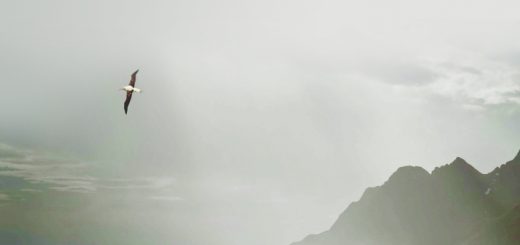The Surprising Benefits of Landslide
Scientists have long puzzled over how animals reach remote islands in the midst of our vast oceans. There are plenty of possible explanations, but now it seems they may have neglected an essential element: landslides.
A study of weevils in the Canary Islands suggests that animals can travel from one land mass to another by floating on giant rafts of earth and vegetation, created by huge landslides.
Islands are famous for their exotic plants and animals, from the giant tortoises of the Galápagos to the long-extinct dodos of Mauritius. Island species like these are often unusual, because they evolve in isolation, often without large predators.
The difficulty has always been explaining how these species’s ancestors got to such remote islands in the first place.
It is easy to see how flying animals like birds, or skilled swimmers, might reach a distant island. But what about slow-moving landlubbers like tortoises?
There are plenty of possible explanations. One is that coastal floods can carry animals out to sea on natural “rafts”, such as floating logs and mats of vegetation. If the animals can go without fresh water for long enough, they might well be carried to an island by currents. The odds may be stacked against them – but it only takes a handful of successful trips to colonise an island, and most islands are millions of years old.
Still, rafting on its own cannot explain everything. In particular, the animals must be living by the coast to be caught up in a flood, so it does not explain how inland-dwellers travel to islands.
A new study suggests that huge landslides could have played a key role.
Brent Emerson of the Institute of Natural Products and Agrobiology in Tenerife and his colleagues propose that “mega-landslides” cause veritable floating forests to put out to sea, carrying on board large numbers of small animals and invertebrate species.
The team used DNA fingerprinting methods to study weevils on the island of La Palma, one of the Canary Islands off the west coast of Africa. They found that the La Palma weevils are genetically almost identical to weevils on Tenerife, which lies over 75 miles (120km) to the east.
Crucially, the weevils’ DNA is closest to those that live around the Orotava Valley in northern Tenerife, typically more than 2,300 ft (700m) above sea level. These weevils would be unlikely to be caught up in a coastal flood.
However, a vast landslide occurred on Tenerife’s north coast about 600,000 years ago. In a matter of minutes, this landslide would have carried swathes of relatively intact biomass from the surface of Tenerife out onto the surface of the Atlantic.
The result was a giant green raft drifting west towards La Palma, a journey lasting between four and 13 days. Emerson says that ocean currents today flow in the right direction, and are thought to have been the same at the time of the landslide.
“What has surprised us most is that this role for mega-landslides has never been suggested before,” says Emerson.
Mega-landslides are relatively common events on volcanic islands like the Canaries. Events known as “volcanic flank collapses” can cause massive subsidence, often due to cracks forming as a result of seismic activity.
“Just standing at the top of the immenseness of the Orotava Valley of Tenerife, and looking across to the neighbouring island of La Palma, one gains an appreciation of the inevitability of it all,” says Emerson. “The valley formed from the sudden loss of more than 130 sq km of the island into the ocean. That translates to a potential inter-island travel ticket for billions of plants, invertebrates and animals.”
In their paper, the researchers note that immediately prior to the eruption of Mount St Helens in 1980, a mega-landslide carried tens of thousands of trees into the nearby Lake Spirit, “where a giant log raft formed and persisted for years”.
Importantly, big landslides can carry lots of individuals to the same island at once, providing a large and genetically diverse founder population – unlike a small raft such as a floating log. In line with this, Emerson’s team identified multiple founding female lineages in the weevil population of La Palma.
Tom Tregenza, an evolutionary ecologist at the University of Exeter in the UK, says Emerson’s research could help explain how flightless land animals, like reptiles and certain insects, have ended up on remote oceanic islands.
“The unique contribution of this new work is that it shows that immense landslides on oceanic islands can cause the movement of species between islands, and it goes on to provide evidence that this has actually happened in the Canary Islands,” Tregenza says. “I think this is a very exciting finding.”
Landslides are terrifying and dangerous for anyone caught up in them. But if Emerson is right, these cataclysmic events have also helped to shape Earth’s biodiversity by populating isolated islands. n














Recent Comments